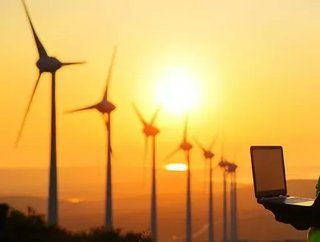Connectivity and the digital future of energy

In the last decade, there is no doubt that most sectors have experienced some form of change, with the recent rapid adoption of new ideas and initiatives set to permanently alter the way industries operate.
However, SSE Enterprise Telecoms suggests that “few sectors experience the change from quite as many angles as energy, where political pressure, consumer demands and environmental obligations are combining in a series of industry-level transformation imperatives that demand action.”
In SSE Enterprise Telecoms’ latest white paper: Connectivity and the digital future of energy, the company identifies three core challenges that the industry is currently facing: the move to RIIO-2; the transition from DNO to DSO; and smart grid adoption.
The move to RIIO-2
“Due for implementation in 2021, RIIO-2 is the new energy sector price control, intended to encourage competition and ensure fair pricing for consumers,” comments SSE Enterprise Telecoms.“It’s also intended to put the consumer at the heart of all decision-making that happens within the energy sector, as well as reducing costs, boosting safety and accelerating the low-carbon economy.”
While RIIO-2 will deliver many benefits to the sector, introducing it into the industry will inevitably bring challenges, including the need for a clear digitalisation strategy to support data needs, ensuring data visibility and providing better customer experience. “Succeeding when RIIO-2 becomes the standard, will inevitably rest on infrastructure modernisation,” adds SSE Enterprise Telecoms.
The transition from DNO to DSO
While the desire to move to more efficient and environmentally friendly operations is not new to the sector, the challenges to drive this comes from the need to change their operating models. Switching from Distributed Network Operators (DNOs) to Distributed Systems Operators (DSOs) highly depends on improved digitised functions and data to monitor grid performance, supply consumption and efficiency.
“Leaders in the sector have already acknowledged this, and the role telecommunications companies are going to play in the DNO to DSO transition,” comments SSE Enterprise Telecoms.
Smart grid adoption
Energy companies are at the centre of a smart boom. There’s a dramatic increase in the number of smart devices going into UK homes, cities and workplaces. With all these devices requiring constant connection and power, it is believed that electricity will account for a quarter of all energy demands by 2050.
SSE Enterprise Telecoms explains that “with the DSO model being underpinned by smart grids, this technology will be an essential integration technology to decrease supply costs, reduce outages and increase synergy.”
While there are many benefits of smart grids, SSE Enterprise Telecoms highlights that for the UK, “much of the network infrastructure in place today is not sufficiently prepared for what the government and consumers will demand tomorrow.”
Developing a digital agenda
Although the industry is facing multiple challenges, namely to become consumer-centric, sustainable and efficient, the connecting thread is digitalisation. “By prioritising digitalisation and modernisation, energy companies can hit the markers set for them by their various stakeholders, and grasp the opportunity provided by an evolving, exciting marketplace,” says SSE Enterprise Telecoms.
While big steps have been made in the energy sector around digitalisation, SSE Enterprise Telecoms suggests there are three focus points for leaders to priorities when developing a digital agenda to mitigate these challenges.






